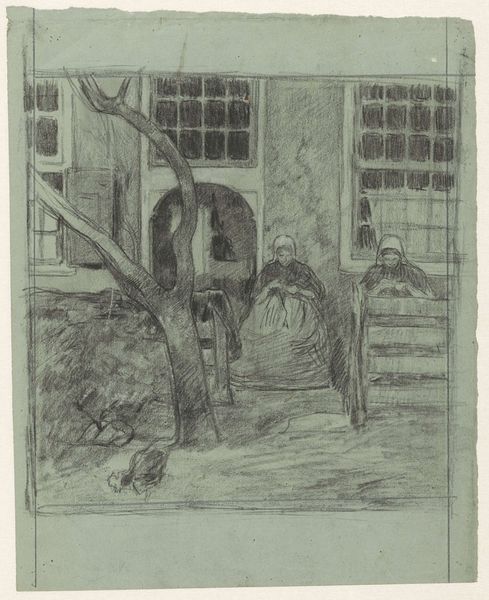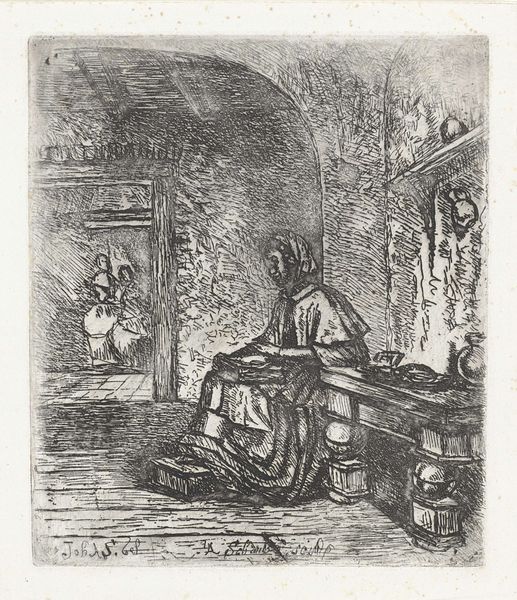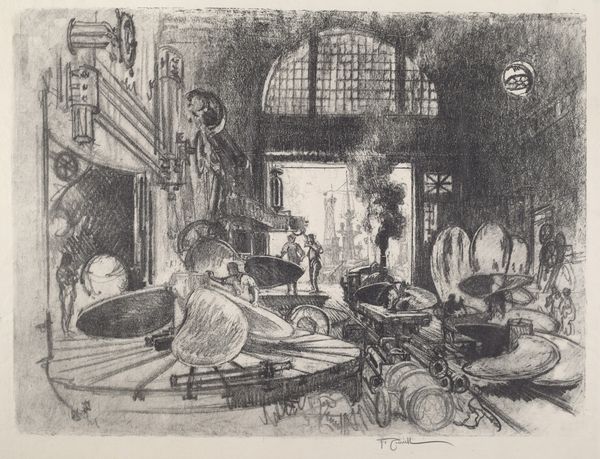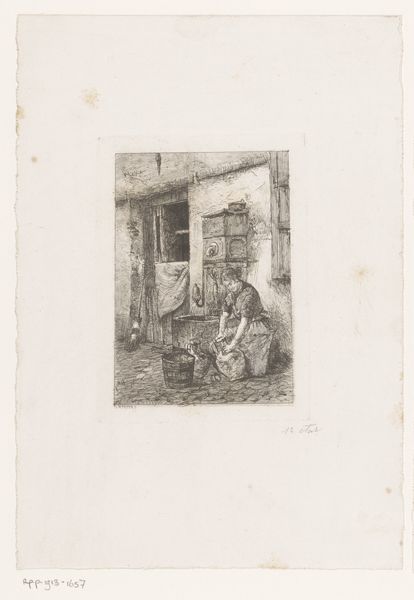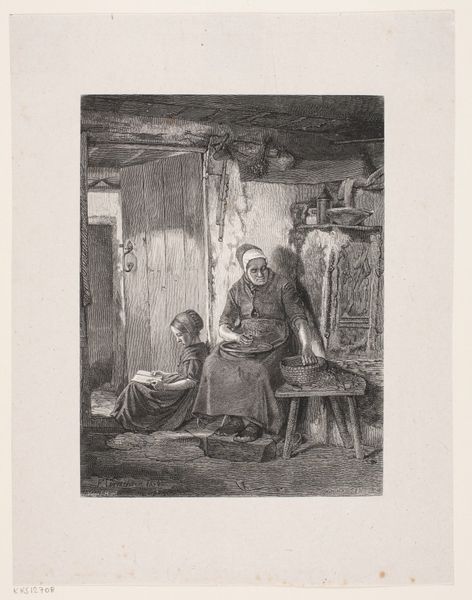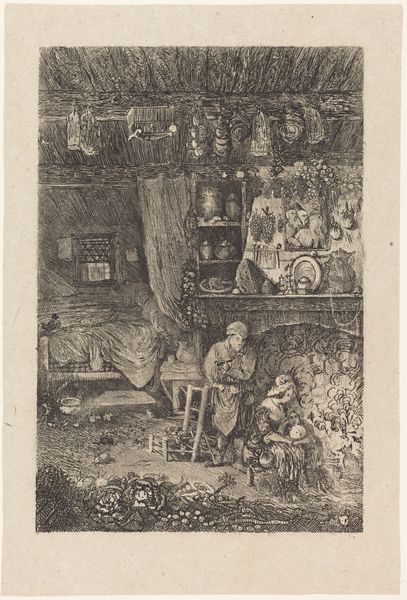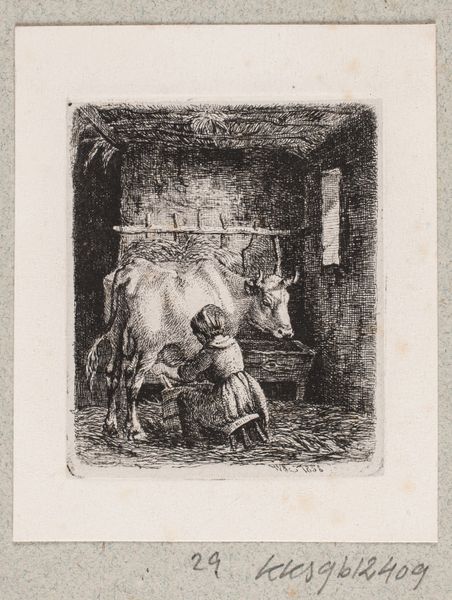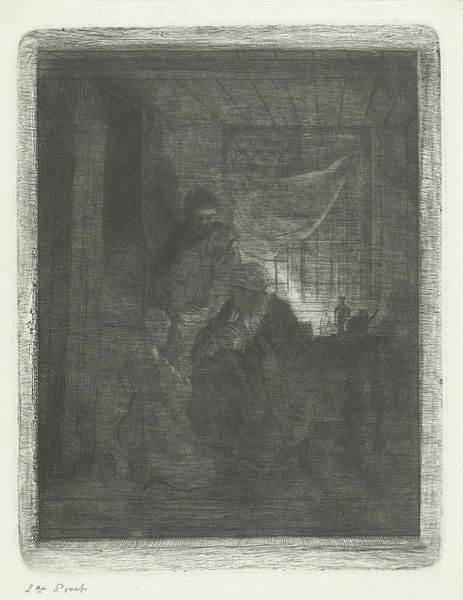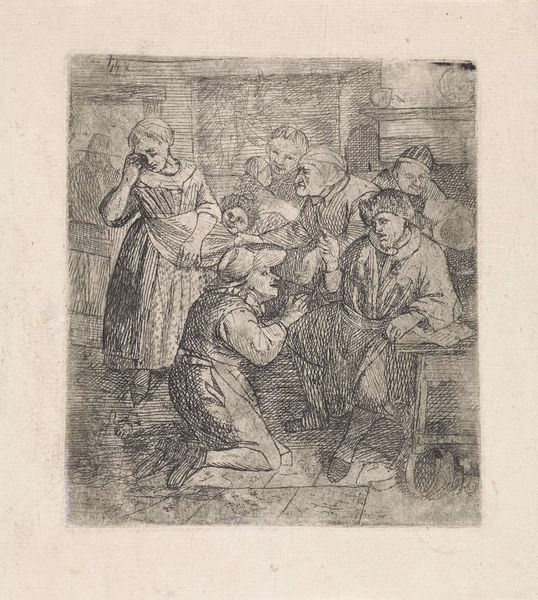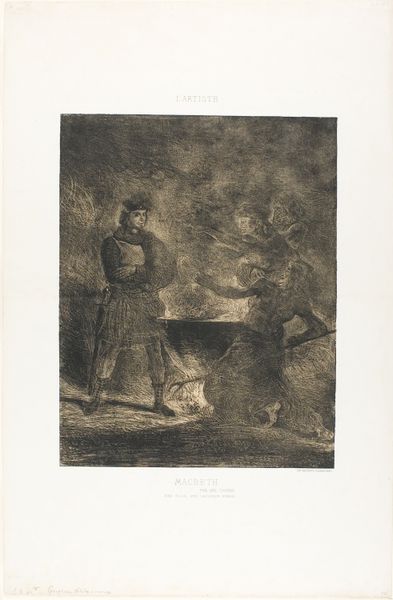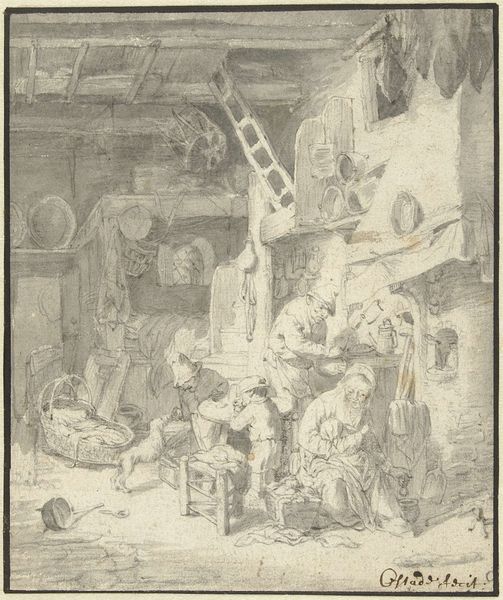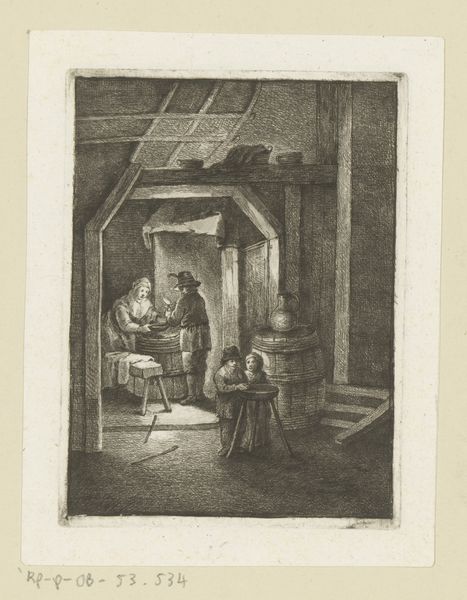
drawing, ink, pencil, pen
#
portrait
#
drawing
#
medieval
#
pen sketch
#
pencil sketch
#
old engraving style
#
sketch book
#
personal sketchbook
#
ink
#
sketchwork
#
folk-art
#
pen-ink sketch
#
pencil
#
pen work
#
sketchbook drawing
#
pen
#
genre-painting
#
sketchbook art
#
realism
Dimensions: height 148 mm, width 128 mm
Copyright: Rijks Museum: Open Domain
Curator: What a delicate image. It appears to be a pencil and ink drawing of a woman engaged in what looks like lacework. There’s a real intimacy to the sketch. Editor: Indeed. My immediate impression is its captivating textural richness despite the limited tonal range. The varying line weights really draw you into the subject's workspace. Curator: This is "Kantwerkster," created sometime between 1830 and 1863 by A. Schaub. It captures a woman performing a craft, a common subject in genre paintings exploring daily life. The sketch provides a window into 19th-century gendered labor, revealing a sense of how women were relegated to domestic spheres. The detail of her posture speaks volumes. Editor: You can almost trace the planes through Schaub's skillful handling of the media, a network of controlled hatchings. Notice how the composition leads your eye in, from the dark threshold, up across her form, to the window—the main light source—then follows it back down to the details on the desk. Curator: Yes, and the surrounding details—the window, the simple room, even the other figures in the background—frame her existence and emphasize her role within the household. What this image subtly depicts, it could be argued, is labor that lacks recognition. In a lot of senses it's very feminist even though it's an earlier work. Editor: An astute reading, but also, consider the artistry! Look how Schaub models her face and the folds of her dress with such economy. And notice the intentional contrast with that more lightly-sketched interior room: it brings our laceworker, anchored by her task, more vividly into focus. Curator: Agreed. Looking closer I recognize an interplay of shadows that casts that deeper social context—illuminating the realities of the time. What you see here isn’t only aesthetic execution but this image also provides a glimpse into the socio-economic constraints placed on women, their creative skill being constrained by labor-intensive production. Editor: Ultimately, for me, "Kantwerkster" reveals how an ostensibly simple, domestic subject—a woman at work—when carefully analyzed reveals surprising visual complexity and balance through masterful employment of hatching. Curator: And it underscores the importance of looking at historical artworks not only for their beauty but also as mirrors reflecting power structures, and unearths layers of history interwoven into its very fabric.
Comments
No comments
Be the first to comment and join the conversation on the ultimate creative platform.
